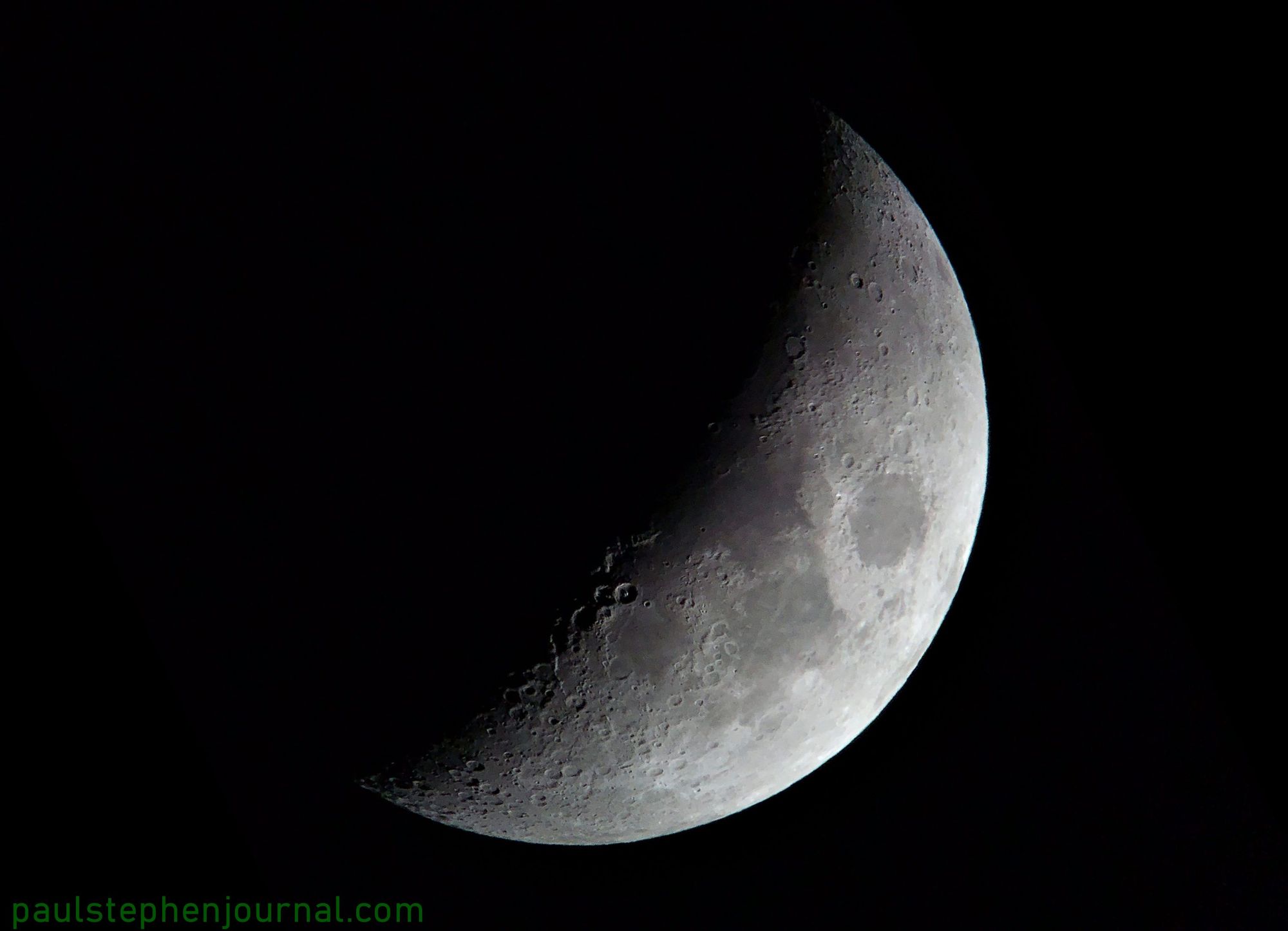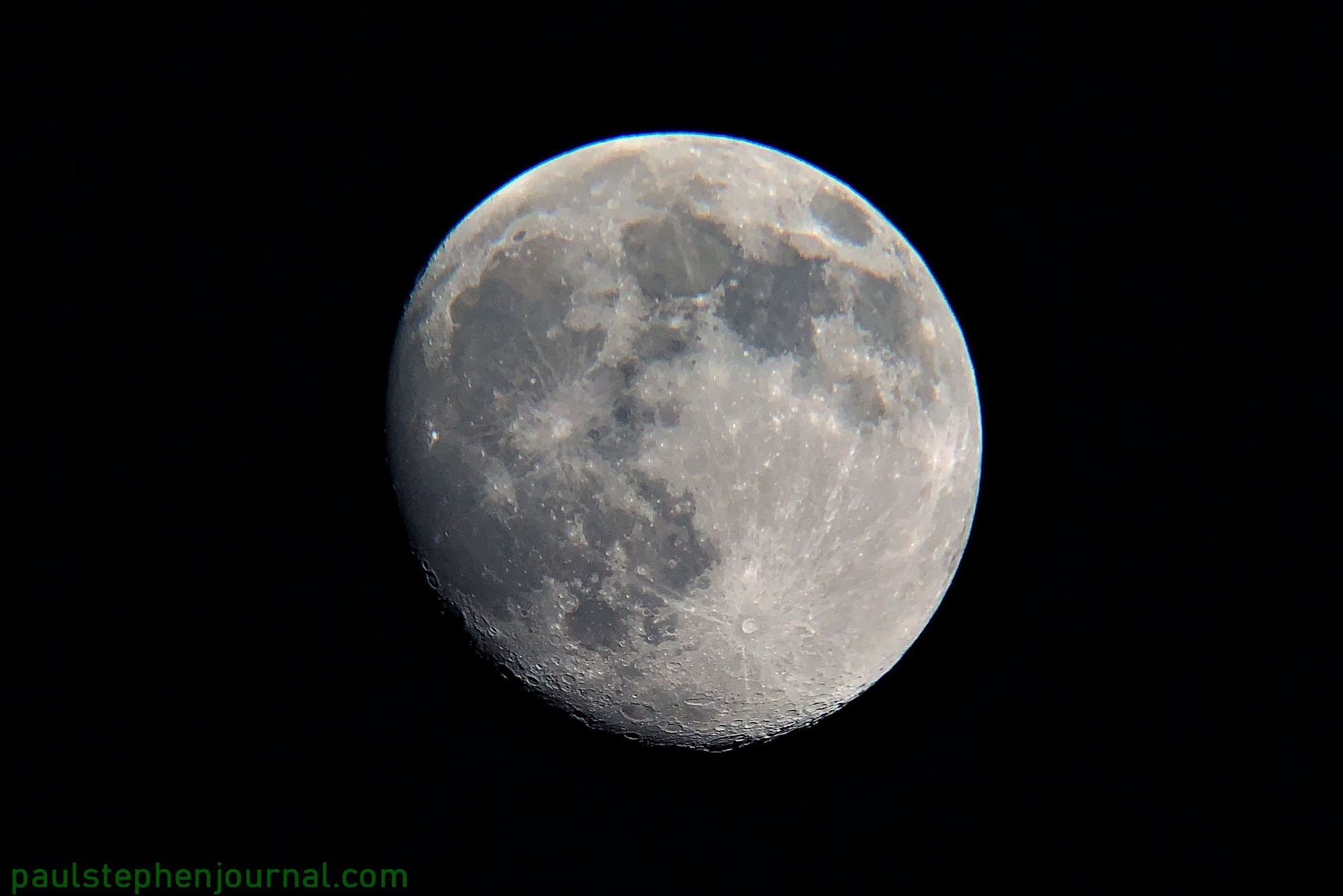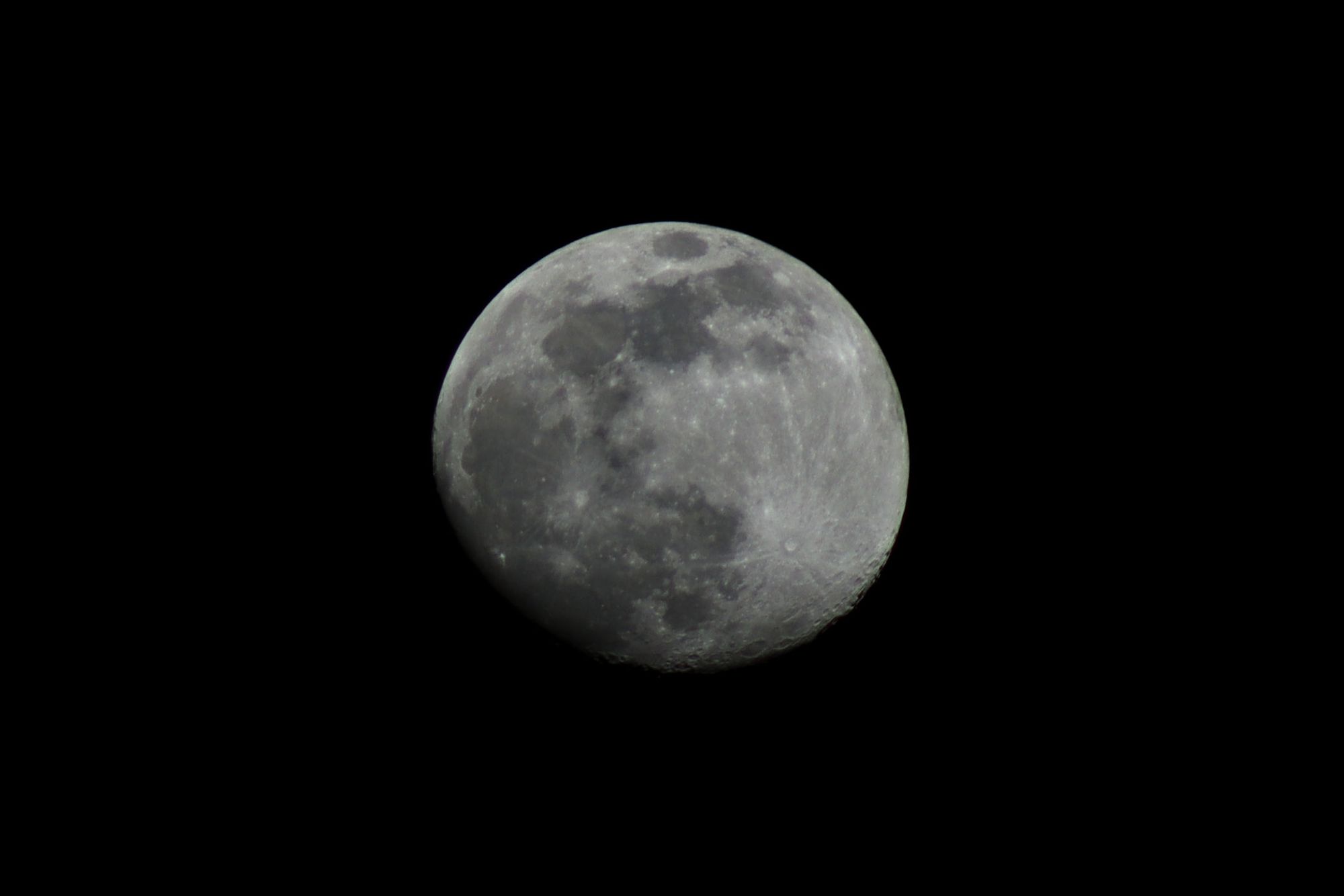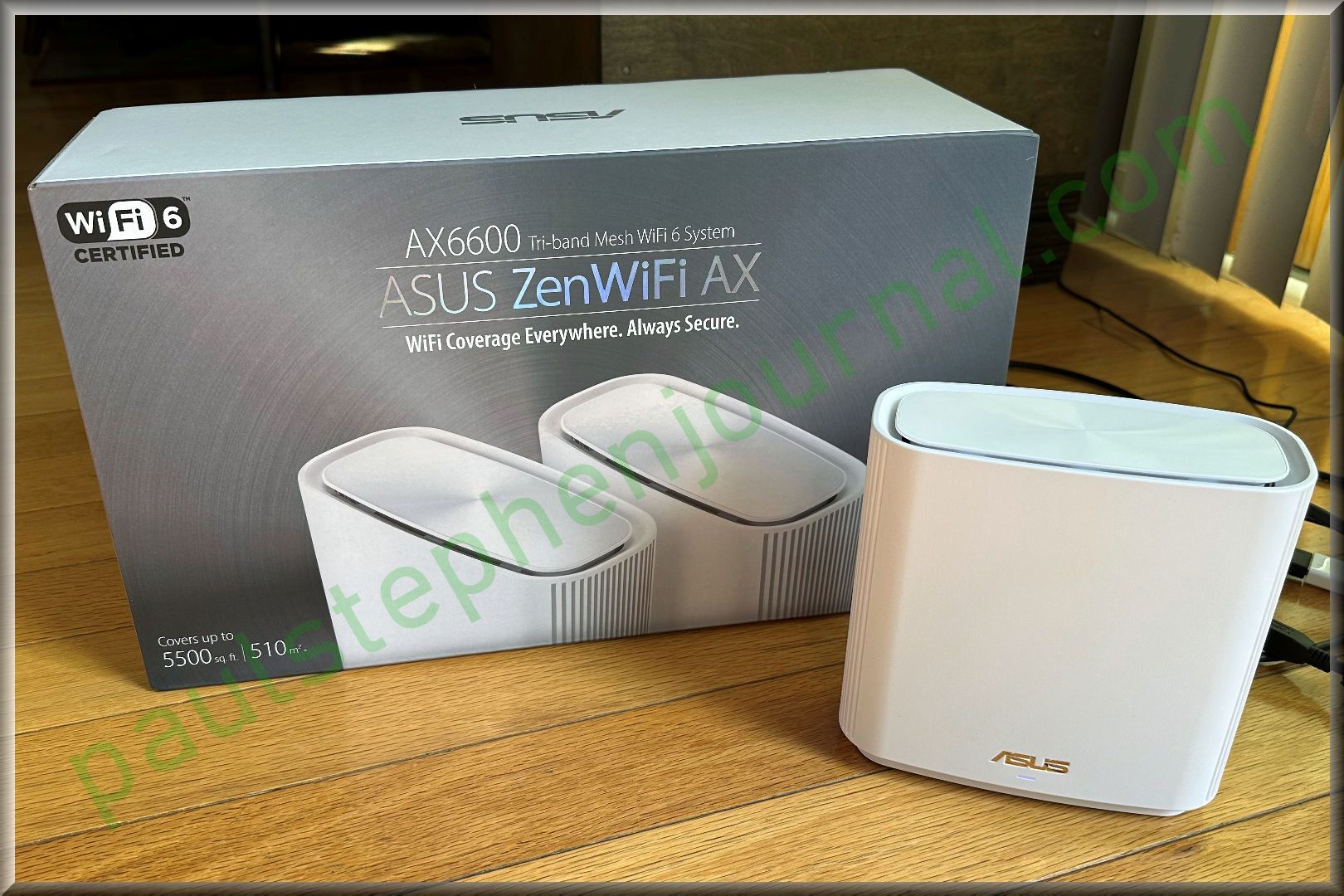February 6th, 2022, 6:50 p.m. local time
In my previous article, I explained in detail how I take pictures of the Sun. A day later, I photographed the Moon with nearly the same equipment setup. This evening’s session for lunar imaging shared much with my daytime solar setup, but also had a few differences.
An extrinsic difference this evening was the weather. Saturday morning was about 10 degrees Fahrenheit. Today, the temperature had “jumped” to an amazing 28 degrees, almost back to freezing! So if I were to ask you, which was the more tolerable, the 10 or 28 degree session, which would you think?
To my surprise, I much preferred Saturday morning at 10 degrees. The key difference was the wind. On Saturday morning, there was no wind, plus the Sun was out. Although I wouldn’t want to hold a picnic in these conditions, it was entirely bearable for my limited astrophotography session. I cannot say the same for my Sunday evening excursion. My potential secondary hope of searching for Uranus, a challenge I have not done in years yet with the seventh planet being so close to the Moon this night, were dashed by the bitter chill that kept my fingers numb. I only did what I had to for a decent sample size of images before I scurried back inside to the comforting warmth of indoors for the remainder of the evening.
Another difference which may not be obvious until you try it is the clarify by which you can see into a telescope eyepiece. It is far more difficult in the daylight. So difficult, in fact, it jogged my mind that on my previous solar imaging attempts, I put a towel over my head as I peered into the eyepiece, searching for and then focusing on the Sun. I almost got a towel or small blanket on Saturday, but I chose to battle on against the weak Sun’s faint glare through the clouds. In fairness, it is far tougher to do so with the Summer Sun’s intensity and brightness, and I likely would have been required to seek a shade cover to obtain reasonable focusing results in, say, June.
Here is the Sunday evening setup, in about the same spot that I photographed the Sun the day prior, but now pointed higher and West instead of due Southeast:
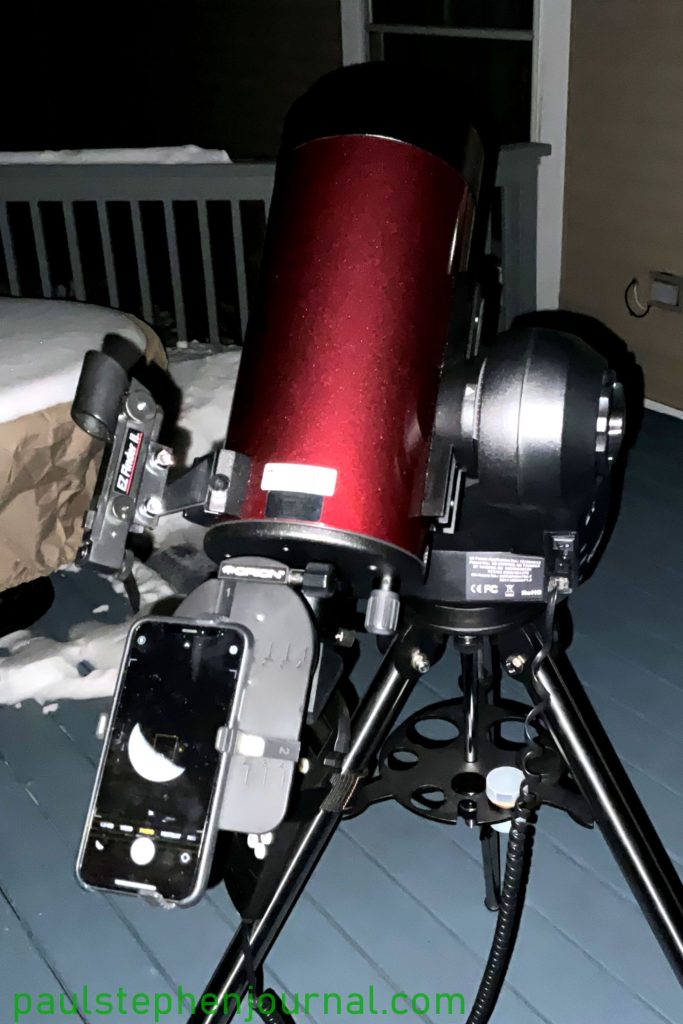
I used the same 23mm eyepiece, and the mount and my iPhone are situated exactly as they were before. But note the two main differences. First, the solar filter is no longer attached to the front of the scope. Having the solar filter on at night would be the equivalent of keeping a camera’s lens cap on – nothing but black. Second, I reattached the “EZ Finder II.” This is the finder that makes it easier to pinpoint objects at night but should be removed before solar viewing, as I explained in my last article the day before.
The last core different is in camera settings, specifically the exposure time. For the Sun, the NightCap app chose 1/80 second. While the Sun is far, far brighter than the Moon from Earth, remember that its brightness was impeded by the solar filter. I used no filter for the Moon and manually set the exposure to 1/500 second.
Equipment Used:
- 127mm Mak-Cass telescope
- 23mm eyepiece
- No eyepiece filter
- iPhone XS
- Smartphone telescope eyepiece adapter
- Nightcap app on iPhone
- f/1.8
- 1/500 sec exposure
- ISO 24
- Focal length: 4mm
- Minor touchups in PaintShop Pro and AfterShot Pro



